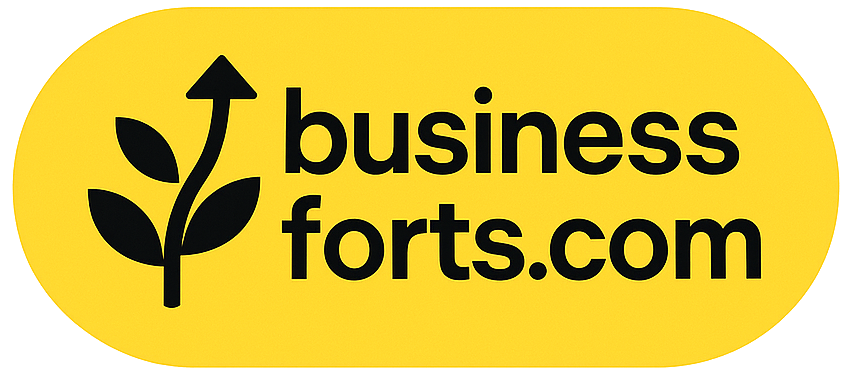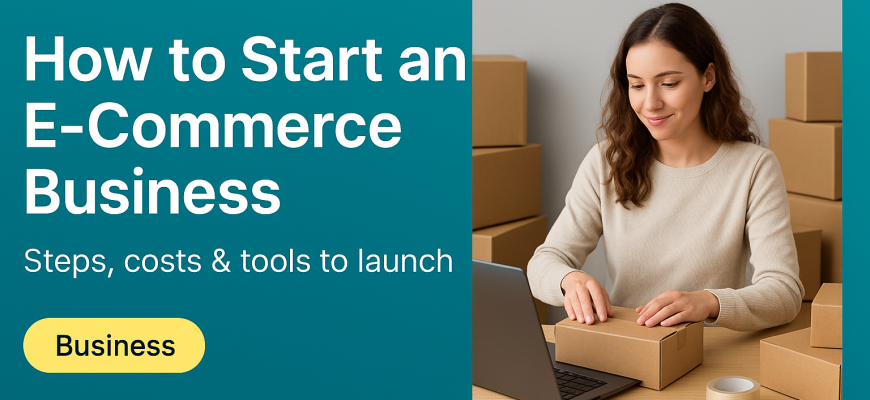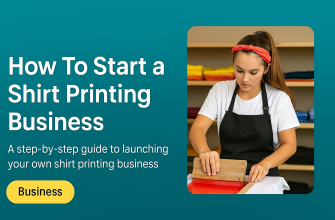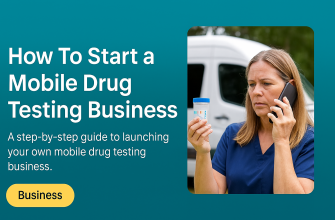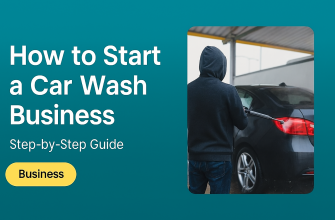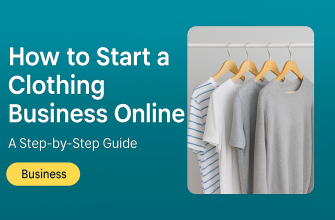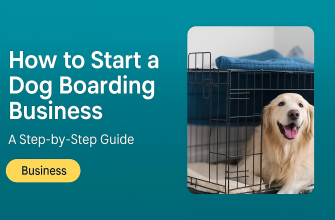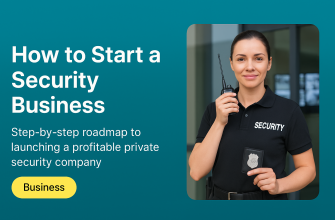Building an online store can be an exciting and empowering journey – especially for women entrepreneurs. I’m Alex Rivers, a business coach dedicated to helping women turn their ideas into thriving businesses. Today’s global e-commerce market is booming (expected to exceed $6 trillion in 2024), and it offers unique opportunities for women. Unlike traditional brick-and-mortar businesses, e-commerce allows you to launch a venture with relatively low upfront costs and flexible hours. With the right approach, your passion can reach customers around the world from your living room. In this post, I’ll walk you through each step of starting an online business: from choosing a product and setting up your store, to branding, legal basics, marketing, and avoiding common pitfalls. Let’s turn that dream into reality!
Why E-commerce Is a Powerful Model for Women Today
E-commerce is a great leveler and a smart choice for women launching a business. Here’s why:
-
Huge, Growing Market: Global online retail is exploding. Total e-commerce sales are expected to surpass $6 trillion in 2024 and continue growing rapidly (forecast to reach $8+ trillion by 2028). This means more buyers are shopping online than ever before – an opportunity to tap into a vast customer base.
-
Low Barriers to Entry: Compared to opening a physical store, starting an online shop requires far less capital and paperwork. You don’t need to rent retail space or stock a huge warehouse immediately. As one analysis notes, e-commerce has “lower barriers to entry” – meaning you can start with minimal costs and no storefront. For example, some entrepreneurs have launched successful online platforms on budgets as low as a few hundred dollars. This accessibility is especially helpful if you’re bootstrapping your business or juggling family and work commitments.
-
Global Reach: With e-commerce, a small business can sell beyond its local neighborhood. You can serve customers anywhere there’s internet, not just in your town or city. Women entrepreneurs have used online marketplaces to expand their audience worldwide. For instance, a female founder in Senegal built a B2B online marketplace so products from African artisans could be sold to buyers globally. The same principle applies no matter what you sell: fashion, beauty products, health items or digital services – you can grow your customer base far beyond local limits.
-
Flexibility and Independence: Running an online store offers flexibility in hours and location. You can often work from home or anywhere, and at times that fit your schedule. This flexibility is a big advantage, especially for women who may have caregiving responsibilities or other obligations. It means you can be involved in product development, marketing, and customer service on your own terms. Many women find e-commerce empowering because they design a business around their life, not the other way around.
-
Strong Female Representation: Data shows that women are increasingly active in online selling. For example, one report found that about 32% of Amazon sellers are women, compared to only 6% of Fortune 500 CEOs. This suggests that e-commerce is an area where women are carving out a significant presence. It’s a reminder that you’re part of a growing community of successful female business owners, and there are resources and mentors eager to support you.
In short, e-commerce combines a huge market with low startup costs and work-life flexibility – a powerful mix for women entrepreneurs. Now let’s talk about how to turn your ideas into products.
Choosing Your Product or Niche
The first big decision is what to sell. Your product (or service) will define your brand and audience. Here are steps to find a winning product or niche:
-
Follow Your Interests and Strengths: Start with what you know or love. Are you passionate about fashion, beauty, health, home decor, or art? Do you have a skill or hobby (like sewing, designing, or digital marketing) that can translate into a product? When you build around your interests, you’ll stay motivated during the hard work of launching a business. Passion also comes through in your marketing, helping you connect with customers authentically.
-
Solve a Problem or Meet a Need: The best products often solve a pain point or fulfill a desire. Think about problems you’ve experienced in your life (or seen friends face) and how your product could make things easier. For example, busy parents might love products that save time or make family life more convenient, while beauty enthusiasts might seek natural or ethical cosmetics. If you create something that genuinely helps people, word-of-mouth will follow.
-
Research Market Demand and Competition: Look online for evidence that people want your product. Use tools like Google Trends or keyword planners to see if interest is rising in your product category. Check marketplaces (Amazon, Etsy) for best-selling items in your niche and read customer reviews – are people asking for improvements? Also survey potential customers via social media or simple polls. Finally, scope out competitors: if there are too many similar products, you may need a unique twist (different design, material, or price) to stand out. Finding the “sweet spot” means enough demand to be profitable, but not so much competition that you get lost in the crowd.
-
Validate with a Small Test: Before fully committing, consider running a small test. You could create a limited batch of products or a minimum viable digital offering (like an e-book or online course). Offer it to a small group (friends, family, a Facebook group) for feedback or pre-orders. This helps confirm that people are willing to pay for what you’re offering. It also gives early insights into pricing, packaging, and marketing messages.
-
Consider Margins and Practicality: Remember to factor in costs. Choose products where you can charge enough to cover expenses (manufacturing or procurement, packaging, shipping, and marketing) and still make a profit. Digital products (like printables, online courses, or design templates) have especially low delivery costs and can be a smart niche for e-commerce newcomers. Physical products may require inventory management and shipping plans, so start small or use dropshipping if you want to avoid stocking inventory initially.
In summary, niche down to find a specialty that excites you and appeals to a clear audience. For example, instead of general fashion, maybe you focus on “petite professional women’s blazers” or “organic skincare for dry skin”. The more specific you are, the easier it will be to reach the right customers. List out ideas, do some quick research, and pick the one that balances passion, demand, and profit potential.
Setting Up Your E-commerce Platform
Once you have a product idea, it’s time to build your online store. There are two main approaches: a standalone website (your own shop) or selling on a marketplace. You might even combine both. Here are options to consider:
-
Your Own Store (e.g. Shopify, WooCommerce, BigCommerce): Building your own site gives you complete control over branding and user experience. Platforms like Shopify are very popular because they are user-friendly for beginners. In fact, Shopify powers around 10% of all U.S. e-commerce, serving over 675 million shoppers in 2023. It offers customizable themes, easy drag-and-drop design, and built-in payment processing. WooCommerce is another option (a WordPress plugin) if you’re comfortable with a bit more technical setup. Starting your own site means you’ll manage everything – from website design to hosting – but it also means you keep more of your profits and own the customer data.
-
Marketplaces (e.g. Etsy, Amazon, eBay): Marketplaces can be great for beginners because they already have huge audiences and handle things like payment processing. For instance, Etsy connects about 7 million active sellers with 92 million buyers worldwide, focusing on handmade or creative goods. If you’re selling art, jewelry, printables, or similar items, Etsy can give instant exposure and trust. Likewise, Amazon and eBay offer access to millions of shoppers. (However, marketplace fees and competition are higher, and you have less control over your store design.) If you choose a marketplace, make sure to optimize your listings with clear photos, detailed descriptions, and relevant keywords.
-
Social Media Shops: Platforms like Facebook and Instagram let you set up basic shops or product tags right in the app. If your audience lives on social media (for example, beauty or fashion customers on Instagram), this can be an easy way to sell directly. However, these are usually best as an additional channel alongside a website or marketplace, rather than your only store.
-
Domain Name and Website Setup: If you go the standalone route, buy a domain name (yourstore.com) that’s easy to remember and reflects your brand. Choose an e-commerce platform and a theme/template that fits your style. Even if you’re not tech-savvy, platforms like Shopify or Wix have step-by-step guides for beginners. Use a clean layout: feature high-quality product images, clear “Buy” buttons, and simple navigation. Don’t let perfectionism stop you – it’s more important to launch and refine over time than to delay for a perfect site.
-
Products, Pricing, and Payment: Add your products to the store with attractive photos and clear descriptions (more on this below). Set prices that cover your costs plus profit. Configure payment gateways (like Stripe, PayPal, or the platform’s own processor) so you can accept credit cards and other payments easily and securely. Finally, set up sales tax rules (if applicable) – more on that in the legal section.
You don’t need to master everything at once. Focus on a clean, functional store. Many new sellers start with one or two platforms (for example, their own Shopify store plus an Etsy shop) and expand later. The key is to pick a starting point, get your products in front of customers, and learn from real feedback.
Branding and Product Presentation
Your brand is what makes your store feel unique and trustworthy. Even on a small budget, strong branding sets you apart. Here’s how to polish your brand and product presentation:
-
Visual Identity: Choose a color palette, fonts, and logo that reflect your style and resonate with your audience. Are you a luxury beauty brand (elegant script and gold hues) or an eco-friendly lifestyle brand (earth tones and clean, simple logo)? These visual cues should be consistent across your website, packaging, and social media. If designing isn’t your strength, consider affordable tools like Canva to create a logo, or hire a freelancer for a simple branding package.
-
High-Quality Product Images: Good photos are essential. Customers can’t touch products online, so clear, attractive images build trust. Use a plain background and good lighting. Show multiple angles or details of each product. Statistics back this up: about 75% of online shoppers say they rely on product photos when making purchase decisions. One study even found products with professional-quality photos converted 33% better than those with poor images. If possible, invest in decent photography (a modern smartphone with good lighting can work if styled carefully). Poor or stock images can make your store seem low-quality.
-
Compelling Descriptions: Write clear, benefit-focused descriptions for each product. Instead of just listing features, explain how the product solves a problem or makes life better. For example, a scented candle description might highlight how it relaxes and uplifts mood, not just say “soy wax, 8 oz.” Use friendly, authentic language that fits your brand voice. Bullet-point key features (size, ingredients, usage) so busy readers can scan quickly. Good copy, along with great photos, reassures customers that your products are worth buying.
-
Consistent Branding and Story: People love a story. Use your “About” page (or social posts) to share why you started this business. Your personal background and values can resonate – maybe you founded the store to empower other women, or to bring a healthier alternative to market. Let customers feel your passion. Also ensure consistency: use the same tone and style in all communications (emails, social media posts, website text). A coherent brand builds recognition and trust.
-
Packaging and Unboxing Experience: For physical products, plan your packaging carefully. Nice packaging (branded boxes or labels, a handwritten thank-you note, tissue paper, etc.) makes buying from you feel special. It also encourages customers to share photos on social media, giving you free publicity. Even if your budget is tight, small touches (like a personalized sticker or a free sample) can delight customers. Remember, someone’s first impression of your brand is when they open the package, so make it memorable.
-
Trust Signals: Add elements that build credibility, like customer reviews (even if just friends/family at first) and clear policies. Display logos or certifications if you have them (e.g. “Vegan friendly” icons or secure payment badges). A phone number or email for customer service also reassures buyers. All these help reduce hesitation and encourage purchases.
In short, treat your brand presentation as an investment. Attractive visuals and a genuine story will pay off in customer trust and repeat sales. Combine those with sharp, on-brand product pages, and you’re setting up for success.
Legal Basics and Logistics
Even as a small e-commerce startup, there are some practical legal and logistical steps you can’t skip. Setting these up early will save headaches later:
-
Choose a Business Structure and Register Your Business: Decide whether to operate as a sole proprietor, LLC, corporation, etc. This affects your taxes and liability. Many small sellers start as a sole proprietor (the simplest form) and later incorporate for liability protection. Check your local requirements – you may need to register a “Doing Business As” (DBA) name. Opening a business bank account early is wise to keep your personal and business finances separate.
-
Taxes (Sales Tax): If you’re in the U.S. or selling to U.S. customers, learn about sales tax laws. Generally, if you have a physical presence (“nexus”) in a state – like an office, inventory warehouse, or if you attend craft fairs there – you must collect sales tax for customers in that state. The rules can be complex (and vary by country), so it’s smart to consult an accountant or use an automated tool provided by your platform. Platforms like Shopify can help calculate and collect sales tax based on your settings. Even if you’re a digital product seller, some regions require VAT or GST collection – so do your research. Being compliant from the start avoids costly fines.
-
Licenses, Permits, and Policies: Depending on your product, you might need specific permits (e.g. selling food or cosmetics often requires health department approval). Do a quick check: if you’re selling makeup, for example, ensure you meet FDA or local regulations. At minimum, draft simple policies for shipping, returns, and privacy. Many e-commerce platforms offer templates. Clearly state your return/exchange policy, which builds trust. Also, if you operate in certain regions (like the EU), you may need a Privacy Policy or GDPR compliance. While this can feel tedious, these basics protect you legally and reassure customers.
-
Shipping and Fulfillment: Plan how you will package and ship orders. Will you handle fulfillment yourself (packing boxes at home) or use a third-party service (like Amazon FBA or a fulfillment center) as you scale? Look into shipping carriers: compare rates from USPS, UPS, FedEx or local postal services. Determine your shipping fees – many sellers offer “free shipping” by incorporating the cost into product prices or minimum order value. Invest in shipping supplies (boxes, padded envelopes, tape) and consider investing in a scale to calculate weights. Keep shipping times reasonable and communicate them clearly on your site. If you’re selling internationally, remember customs forms and potential duties – some platforms can automate customs paperwork for you.
-
Inventory Management: If you stock products, decide how you’ll track inventory to avoid overselling. Even a simple spreadsheet or inventory app can help. For dropshipping (where a supplier ships directly to customers), ensure your supplier is reliable in quality and delivery times. Poor quality or late shipments can damage your brand reputation, so choose partners carefully.
-
Payment Security: Use secure, reputable payment gateways (Stripe, PayPal, etc.) so customers’ credit card info is protected. Ensure your site has an SSL certificate (the “https” and padlock in the browser) to encrypt data. This is usually automatic on most e-commerce platforms, but double-check. Offering popular payment options (credit card, PayPal, Apple Pay, etc.) makes checkout smoother and boosts conversions.
Taking care of these details from the start makes you look professional and keeps your business running smoothly. It might not be the most glamorous part of entrepreneurship, but it’s crucial groundwork. Once these are in place, you can focus more on selling and growth.
Building Your Audience: Marketing Strategy
Now that your store is ready, how will people find it? You need a plan to attract and engage customers. Combine different tactics to build an audience over time:
-
Know Your Target Audience: First, define who your ideal customer is. What are their interests, age range, and online habits? Do they spend time on Instagram or prefer Facebook? Are they busy moms or tech-savvy young adults? Create a simple customer persona (e.g., “Sarah, a 30-year-old working mom who loves natural skincare”). Understanding your audience helps you choose the right marketing channels and messaging.
-
Social Media Marketing: Social platforms can drive massive discovery. In fact, about **82% of consumers use social media to discover and research products before buying. This means having an active presence on platforms where your customers hang out (Instagram for visuals, Facebook for community groups, Pinterest for inspiration, TikTok for younger trends, etc.). Post regularly: behind-the-scenes looks at making your product, customer testimonials, tips related to your niche. Engage with followers by replying to comments and messages. Use relevant hashtags to reach new audiences. You don’t have to be on every platform; focus on one or two and do them well.
-
Content Marketing and SEO: Create valuable content that helps or entertains your audience. For example, if you sell fitness gear, you might start a blog or YouTube channel with workout tips. If your niche is organic baby products, share parenting advice posts. Quality content improves your website’s SEO (search engine ranking), helping you appear in Google when customers search related keywords. Over time, content attracts visitors without paid ads. Remember to optimize product pages too: use clear titles and descriptions so people find you via search (e.g. “handmade soy lavender candles” instead of a vague name like “Relax Candle”).
-
Email Marketing: Collect email addresses on your site (with visitor permission). Offer a small discount or freebie for signing up. Email is a powerful tool: it lets you build a relationship and promote products directly. Send a welcome email to new subscribers, then occasional newsletters with product updates, behind-the-scenes stories, or exclusive offers. Email usually has a very high ROI because these people have already shown interest in you.
-
Paid Advertising: If you have a marketing budget, consider paid ads. Facebook/Instagram ads allow very targeted campaigns (e.g., women aged 25-40 interested in eco-friendly products). Google Ads let you capture buyers actively searching for what you sell. Start small, test different ad creatives, and use analytics to see what works. Paid ads can be effective, but even without a big budget, you can reach your initial followers by posting in relevant groups and using organic strategies.
-
Influencer and Partner Marketing: Collaborating with influencers or complementary businesses can expand your reach. Look for micro-influencers (people with a few thousand followers) in your niche – they often have engaged audiences and more affordable rates. According to recent data, 82% of consumers trust recommendations from micro-influencers. For example, a fashion blogger with 10K followers might share your dress with her audience. You might offer her a free sample or small commission for referrals. Also consider partnerships with non-competing brands (e.g., a natural soap brand and an organic candle maker cross-promoting each other).
-
Community and Networking: Don’t underestimate word-of-mouth and community. Join online groups or forums related to your niche (for example, a sustainable living Facebook group). Share helpful advice (not just sales pitches). Over time, people will see you as an expert. Also network with other women entrepreneurs – support groups like Female Entrepreneurs Hub or local meetups can lead to collaborations and referrals. As one Entrepreneur article points out, finding support and mentorship with other women in e-commerce is key to success.
-
Customer Engagement: Encourage your first customers to leave reviews and share photos. Positive reviews and real-user images on your site or social media serve as powerful testimonials. You might offer a small discount on their next order for submitting a review. Happy customers become repeat buyers and promoters of your brand. Always provide great customer service (fast responses, easy returns) – word spreads quickly when you go above and beyond.
Building an audience takes time and consistency. Don’t expect overnight sales; commit to regular marketing activities. Track what channels send traffic and sales (most e-commerce platforms have analytics) and double down on what works. Stay patient and keep learning – every post, email, or ad teaches you more about your customers.
Common Beginner Mistakes to Avoid
When you’re excited to get started, it’s easy to slip up. Here are some common pitfalls and how to steer clear of them:
-
Skipping Research: Not spending enough time on market research or audience understanding is a common mistake. Avoid guessing what people want. Use real data (surveys, keyword tools, competitor analysis) to guide product selection and pricing.
-
Selling Too Broadly: Trying to offer too many products or targeting everyone at once can dilute your brand. Focus on a clear niche. As your brand grows, you can branch out into related products. A narrower focus at first often leads to stronger initial sales and a more memorable brand.
-
Choosing the Wrong Platform: Don’t pick a store platform just because you heard of it. Match your choice to your needs. For example, if you mainly sell handmade goods, a marketplace like Etsy may bring more traffic than a standalone site at first. Conversely, if you want full control and branding, build your own site on Shopify or WooCommerce.
-
Underinvesting in Presentation: Using low-quality photos or sloppy descriptions can turn customers away. Remember the statistics: good images matter. Take the time to make your product pages look polished. First impressions count a lot online.
-
Neglecting Mobile: Many shoppers use phones. If your site isn’t mobile-friendly or loads slowly on mobile, you’ll lose sales. Most modern e-commerce themes are responsive, but double-check how your store looks on different devices.
-
Poor Financial Planning: Running out of cash is a real risk. Keep track of all your costs (product, shipping, marketing, software fees) and plan a budget. Price your items so you have a healthy profit margin. Don’t spend all your profits reinvesting too quickly without setting some funds aside.
-
Ignoring Analytics: Use the analytics tools in your store platform. Track things like which products sell most, where visitors are coming from, and your cart abandonment rate. These numbers tell you what’s working. For example, if many people add items to cart but don’t complete checkout, consider simplifying that process.
-
Relying Solely on One Channel: If you depend only on Instagram posts or only on friends telling friends, your growth will stall. Diversify your marketing: social, email, SEO, etc. That way if one channel changes (for example, an algorithm update), your whole business isn’t in trouble.
-
Fear of Feedback: Don’t be afraid of constructive criticism. Maybe your first product design needs tweaking, or your pricing is off. Take negative feedback calmly and use it to improve. Often, early issues are fixable, and responsive entrepreneurs turn early critics into loyal customers.
The road to success involves some trial and error. If something isn’t working, learn from it and adjust. As one marketing guide notes, understanding your audience is crucial – not doing so is one of the biggest mistakes. Be flexible and keep learning.
Time to Make It Happen
Starting an e-commerce business is a journey of courage and creativity, and you have all the tools to succeed. Remember, e-commerce today is more accessible than ever – a thriving online marketplace with trillions of dollars in sales worldwide. As a woman entrepreneur, you bring unique insight and determination. By choosing a product you love, setting up the right platform, crafting a memorable brand, taking care of the legal basics, and actively marketing to build your audience, you’ll set a strong foundation.
Stay motivated and lean on the supportive community around you. Utilize resources (like women’s entrepreneur groups and mentorships) to overcome challenges. Plan carefully, but don’t let fear hold you back – start small if needed, and grow step by step. With passion, persistence, and the practical steps outlined above, you can launch an e-commerce store that not only succeeds but also inspires others.
You’ve got this – now go build your dream business!
